06 Dec Risk-Proofing Your Workforce: Strategies for Success
Summary
Unlock the keys to success with our latest blog: "Risk-Proofing Your Workforce: Strategies for Success." In a rapidly changing business landscape, workforce planning and risk management are the cornerstones of organizational resilience. Dive into the core concepts, from data-driven decision-making and talent acquisition to mitigating workforce-related risks and leveraging technology for strategic planning. Stay ahead in the evolving workforce landscape.
Workforce planning and risk management are essential components of any organization’s success. In today’s fast-paced and constantly changing business landscape, developing a strategic approach to managing your workforce reduces the risks that can be created through having too few or the wrong people in your organization. In this blog, we will break down the key concepts and strategies involved in effective workforce planning and risk management.
1. Understanding Workforce Planning:
Workforce planning is the process of aligning a company’s human capital with its strategic goals. It involves forecasting employees’ needs, analyzing the current workforce, and putting strategies in place to ensure that the right people are in the right roles at the right time. Here are some key aspects to consider:
- Data-Driven Decision Making: Workforce planning begins with collecting and analyzing data; this includes current employee demographics, skill sets, and performance metric indicators, as well as external factors like market trends and changes in regulation.
- Talent Acquisition and Retention: Having the right talent is critical to the success of your organization. Begin by identifying your existing high performers and ensuring that you have a plan in place to keep them; then determine where you have talent and skill gaps and create a comprehensive recruiting plan to address those needs.
- Succession Planning: A strong workforce planning strategy should include succession planning to ensure key positions are never left vacant for long periods.
2. Risk Management in Workforce Planning:
Successful workforce planning is directly linked to effective risk management. Here, we will explore how you can integrate risk management principles into your workforce planning:
- Identifying Workforce-Related Risks: Look at various types of workforce-related risks, such as talent shortages, attrition, and compliance issues. Understand how these can impact your company’s ability to achieve its strategic objectives.
- Mitigation Strategies: Develop strategies to reduce workforce-related risks, including training, diversifying your talent pool, and creating contingency plans for potential obstacles.
- Compliance and Legal Considerations: Ensure that your workforce planning and risk management efforts are in line with labor laws, regulations, and industry standards. This will help avoid legal issues and safeguard your company’s reputation.
3. Data and Technology in Workforce Planning:
In today’s digital era, data and technology play a crucial role in workforce planning and risk management:
- Workforce Analytics:Discover how analytics tools can help you make knowledgeable decisions by providing insights into your employee’s performance, attrition, and potential risks factors.
- Scenario Planning: Use technology to model different scenarios and assess the result of workforce changes, economic shifts, or other external factors.
- AI and Automation:Learn how AI and automation can streamline workforce planning and risk management processes, making them more efficient and leading to more effective outcomes.
4. Sourcing in an Evolving Workforce where Technology is Changing
Recruiting has experienced an enormous shift in recent years as technology continues to impact the workforce landscape. Traditional sourcing methods are becoming less reliable in attracting and retaining top talent in this rapidly evolving environment. To remain competitive, recruiters must adapt to the changing workforce and leverage technological advancements.
- Data-Driven Sourcing: Recruiters are now able to use data and analytics to identify potential candidates, assess their compatibility, and predict their future work performance. This approach allows for more accurate targeting and a better understanding of candidate behaviors and preferences.
- Social Media and Online Platforms: Platforms like LinkedIn, Twitter, and specialized job boards have become useful tools for identifying and engaging with potential candidates. Recruiters can tap into these platforms to build relationships with passive candidates and harness an extensive talent pipeline.
- Artificial Intelligence (AI) and Automation: AI and automation are creating greater efficiency in the sourcing process by streamlining tasks that were once very time-consuming. Chatbots, for example, can engage with potential candidates, answer common questions, and even schedule interviews. Machine learning algorithms can assess resumes and job descriptions to identify the best candidates, saving recruiters significant time.
Strategic workforce planning and risk management are essential in today’s business landscape. By aligning your workforce with your strategic goals and managing risks, you can ensure the long-term success of your organization and remain resilient. Stay tuned for future insights on these critical topics.


